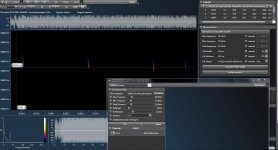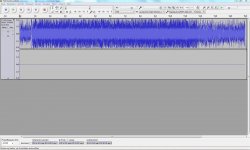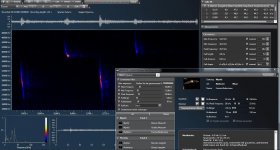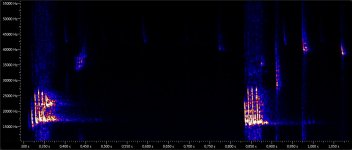Audio Recorders, continued
FD works perfect with no hissing noise in the background, however on HD I do hear a constant hiss in the background (Wich seems the opposit as Stefan)
The hissing noise may depend from the ear of the beholder. I thought it was OK, but had no comparison, since it was the first bat detector I ever listened to. Wikipedia (as linked above) gives a hint:
There is an irreducible hiss in the background of every bat detector recording. This is "system noise" from the microphone and electronics. This can vary widely between bat detectors and various types of bat detectors.
Someone from a Yorkshire bat group who has probably used other bat detectors before, says in a review of the micro trio (
http://www.batplanet.co.uk/reviews/ce-505-trio-bat-detector-review ): "In Heterodyne mode the sound is crisp and clear, [...]"
A few additional comments on audio recorders.
Olympus VN713PC. Presently available from the Ciel Eam shop for Euro 89.90 and sometimes seen in online auctions for ~Euro 60. To be fair, the Ciel model comes with "Ciel Firmware", which increases the number of files to 999 per folder. The standard model can record only 200 files in each of the five folders. I wonder whether this firmware has other features important for our bat business. Apparently the standard version has VCVA (Variable Control Voice Actuator) and "Voice Sync", a feature to distinguish sound from silence and record the sound bits to separate files. - However, if the FD sound of the micro trio cannot help to identify a bat, why would I want to record 999 bat calls (or even 5 x 999 files) in FD sound quality over the night? It makes no sense. I'll admit that I have some fun with these 500 MB FD all-night recordings from my MP330, but if I really wanted to look at the one bat call uttered exactly at midnight, there is no particular advantage of having this single time-stamped file from Olympus, versus loading the large 500 MB file into Audacity and then zoom in.
Transcend MP330. For the low price (~Euro 40), it has limitations. It is a (bad) joke that it stores only 99 files. That said, 99 files are almost always enough for a late bat walk. It also isn't strictly necessary to record every single call separately. So if I've already collected 70 bat calls, I'll change my strategy and record 5-10 bat calls into one file. Splitting the calls later with Audacity is fast and simple. Separate files for different places (lake, bridge, forest, ...) makes sense anyway.
[Transcend offers a newer model: MP350, but it has no dedicated line-in jack.]
Zoom H2 or H2n. Famous for their recording quality, but maybe "too good" for the micro trio. If the H2n lasts 20 hours on batteries (vs four hours for the H2), unattended recording seems a possibility. But recording the very mediocre FD sound from the micro trio with a high-tech H2 seems pointless.








